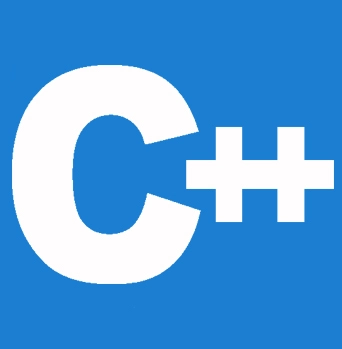


在本教程中,您将学习如何在 C++ 中处理字符串。您将学习如何声明、初始化以及在各种输入/输出活动中使用它们。除此之外,我们还将了解 C++ 字符串的含义、C++ 中的 C 风格字符字符串以及 C++ 字符串与字符数组之间的主要区别。
C++ 是一种广泛使用的通用编程语言,它在一定程度上使用了面向对象编程(OOPs)原则。通过 C++ 字符串,它允许您处理文本和字符。本教程涵盖了所有关于 String 类的信息。
字符串就是一组/集合字符。C++ 编程语言通常使用两种类型的字符串
C++ 字符串用于文本和字符的表示和操作。有两种不同的字符串表示形式:C 风格字符字符串和主要在 C++ 中引入的 String 类。

C 风格字符字符串是 C 编程语言的一个特性,现在在 C++ 中也可用。它类似于一维字符数组,包含一个字符序列,并以空字符结尾。因此,如果您想保留单词“Hello”,您可以创建一个 C 风格字符字符串,其中包含字符“H”、“e”、“l”、“l”、“o”和“0”。
在这种情况下,您所要做的就是告诉编译器将单词“Hello”保存为字符串。但默认情况下,它仍然会在末尾包含字符“\0”。请看以下示例,它演示了如何使用字符数组主要在一个变量中构建和存储 C 风格字符字符串。
#include
using namespace std;
int main (){
char greet[6] = {'H', 'e', 'l', 'l', 'o', '\0'};
cout << "This is a wonderful greeting message for you: ";
cout << greet << endl;
return 0;
}
输出
This is a wonderful greeting message for you: Hello
char str[] = "C++";
以上代码中的字符串 str 包含 4 个字符。
尽管“C++”有三个字符,但空字符 \0 会自动附加到给定字符串的末尾。
char str[4] = "C++";
char str[] = {'C','+','+','\0'};
char str[4] = {'C','+','+','\0'};
OOP 概念是 C++ 的基础,它允许您将字符串表示为 String 类的对象 (std::string)。该类允许您快速声明字符串变量,并且还可以帮助存储其中的任何字符序列。这里有一个示例,说明如何使用 String 类来表示字符串。
#include <iostream>
using namespace std;
int main(){
string greet = "Hello beautiful";
cout << "This is a wonderful greeting message only for you: ";
cout<<greet<<endl;
}
输出
This is a wonderful greeting message only for you: Hello beautiful
如上图所示,无需声明一个数组来保存字符。
尽管 C 风格字符字符串和 C++ String 类都用于表示字符串,但它们之间存在一些区别。最显着的区别是
输入函数可用于向字符串添加或删除字符或字符串。输入函数包括:
#include<iostream>
#include<string>
using namespace std;
int main(){
// here declaring of a string variable is done
string s;
cout << " Please enter a string: ";
// Using getline() in order to accept input
getline(cin,s);
// For displaying the entered string
cout << "Our initial string will be : ";
cout << s << endl;
// just Insert a character i at the end of the string
//now we will be using the push_back function
s.push_back('i');
// Displaying the string just after push_back
cout << "The new string is : ";
cout << s << endl;
// Deleting the i from the end using pop_back which we inserted
s.pop_back();
// Displaying the string after pop_back
cout << "After pop_back operation, our string will be : ";
cout << s << endl;
return 0;
}
输出
Please enter a string: Welcome to learn eTutorials Our initial string will be : Welcome to learn eTutorials The new string is : Welcome to learn eTutorialsi After pop_back operation, our string will be : Welcome to learn eTutorials
顾名思义,迭代器函数用于与遍历字符串中每个字符的迭代器交互。
#include<iostream>
#include<string>
using namespace std;
int main(){
string s = "LearneTutorials";
// Declaring the iterator
std::string::iterator iter;
// Declaring the iterator mainly for reverse functions
std::string::reverse_iterator iter1;
// Displaying the string
cout << " We are using the forward iterators : ";
for (iter=s.begin(); iter!=s.end(); iter++)
cout << *iter;
cout << endl;
// Displaying the reverse string
cout << "Now we are using the reverse iterators : ";
for (iter1=s.rbegin(); iter1!=s.rend(); iter1++)
cout << *iter1;
cout << endl;
return 0;
}
输出
We are using the forward iterators : LearneTutorials Now we are using the reverse iterators : slairotuTenraeL
为了遍历字符串,在这种情况下,我们在代码中使用了 for 循环以及正向和反向迭代器。使用正向迭代器的第一个 for 循环继续遍历和打印字符,直到到达字符串的末尾。然后,我们在第二个 for 循环中使用了反向迭代器,从末尾开始遍历并打印字符,一直到字符串的开头。
C++ 字符串容量函数使处理字符串的大小和容量变得更容易。以下是容量类型的主要用途
#include<iostream>
#include<string>
using namespace std;
int main(){
string s = "C++ Programming is very much interesting!";
cout << "Initial string : ";
cout << s << endl;
// Resizing string using resize()
s.resize(15);
cout << "String after resizing is done : ";
cout << s << endl;
// Using the capacity function
cout << "String's capacity is : ";
cout << s.capacity() << endl;
// Using the length function
cout<<"String's length will be : "<<s.length()<<endl;
// Using the shrink_to_fit function
s.shrink_to_fit();
cout << "Capacity of the post shrinking is : ";
cout << s.capacity() << endl;
return 0;
}
输出
Initial string : C++ Programming is very much interesting! String after resizing is done : C++ Programming String's capacity is : 41 String's length will be : 15 Capacity of the post shrinking is : 15
通过使用复制和交换等操作,您可以使用操作函数来操作字符串。
#include<iostream>
#include<string>
using namespace std;
int main(){
string s1 = "Welcome All, let us enjoy learning C++ with learn eTutorials";
string s2 = "C++ is Awesome!";
// Declaring character array
char ch_arr[80];
// Using copy() to copy elements from s1 and
// placing it in ch_arr
s1.copy(ch_arr,40,10);
// Printing of the array
cout << "Character array : ";
cout << ch_arr << endl << endl;
// before swapping the strings
cout << " The String number 1 just before swapping is : ";
cout << s1 << endl;
cout << "The String number 2 just before swapping is : ";
cout << s2 << endl;
// using swap() function
s1.swap(s2);
// Strings after swapping
cout << "String number 1 after swapping will be : ";
cout << s1 << endl;
cout << "String number 2 after swapping will be : ";
cout << s2 << endl;
return 0;
}
输出
Character array : l, let us enjoy learning C++ with learn The String number 1 just before swapping is : Welcome All, let us enjoy learning C++ with learn eTutorials The String number 2 just before swapping is : C++ is Awesome! String number 1 after swapping will be : C++ is Awesome! String number 2 after swapping will be : Welcome All, let us enjoy learning C++ with learn eTutorials